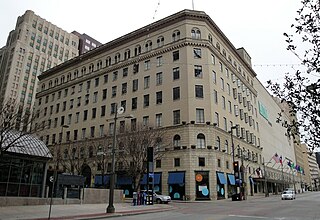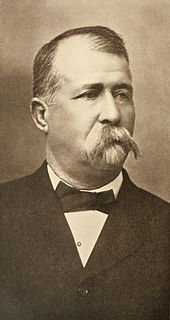
Kauaʻi County is a county in the U.S. state of Hawaiʻi. It consists of the islands of Kauaʻi, Niʻihau, Lehua, and Kaʻula. As of the 2010 Census the population was 67,091. The county seat is Līhuʻe.

Hawaiʻi Volcanoes National Park, established on August 1, 1916, as Hawaii National Park is an American national park located in the U.S. state of Hawaii on the island of Hawaii. The park encompasses two active volcanoes: Kīlauea, one of the world's most active volcanoes, and Mauna Loa, the world's most massive shield volcano. The park provides scientists with insight into the birth and development of the Hawaiian Islands, and ongoing studies into the processes of volcanism. For visitors, the park offers dramatic volcanic landscapes, as well as glimpses of rare flora and fauna.
The following is an alphabetical list of articles related to the U.S. state of Hawaii:

President William McKinley High School, more commonly referred to as McKinley High School, is a comprehensive public high school in the Honolulu District of the Hawaii State Department of Education. It serves grades nine through twelve. McKinley is one of three schools in the Kaimuki-McKinley-Roosevelt Complex Area which includes Kaimuki High School and Roosevelt High School. It was founded as Fort Street English Day School in 1865. Later known as Honolulu High School, it was renamed in memorial to William McKinley, the twenty-fifth President of the United States, in 1907. President William McKinley High School is one of the oldest secondary schools in the state and several of its buildings have been listed on the National Register of Historic Places. The campus displays sculptures by Satoru Abe (1926–) and Bumpei Akaji (1921–2002). McKinley High School is accredited by the Western Association of Schools and Colleges.

The Hawaii State Department of Education (HIDOE) is the only statewide public education system in the United States. The school district can be thought of as analogous to the school districts of other cities and communities in the United States, but in some manners can also be thought of as analogous to the state education agencies of other states. As the official state education agency, the Hawaiʻi State Department of Education oversees all 283 public schools and charter schools and over 13,000 teachers in the State of Hawaiʻi. It serves approximately 185,000 students annually. The HIDOE is currently headed by Superintendent Christina Kishimoto. The department is headquartered in the Queen Liliuokalani Building in Honolulu CDP, City and County of Honolulu on the island of Oahu.

The Hawaiian Volcano Observatory (HVO) is an agency of the U.S. Geological Survey, with temporary offices located in Hilo on the Island of Hawaiʻi. The former volcano observatory clifftop facility and HVO offices, closed due to structural damage in 2018, is located at Uwekahuna Bluff on the rim of Kīlauea Caldera. The observatory staff and equipment monitors four active Hawaiian volcanoes: Kīlauea, Mauna Loa, Hualālai, and Haleakalā. Because Kīlauea and Mauna Loa are significantly more active than Hualālai and Haleakalā, much of the observatory's research is concentrated on the former two mountains.

Kīlauea Point National Wildlife Refuge is a National Wildlife Refuge on the northwest coast of the island of Kauaʻi in Hawaiʻi.

This is a list of properties and historic districts in Hawaii listed on the National Register of Historic Places. More than 340 listings appear on all but one of Hawaii's main islands and the Northwestern Islands, and in all of its five counties. Included are houses, schools, archeological sites, ships, shipwrecks and various other types of listings. These properties and districts are listed by island, beginning at the northwestern end of the chain.

The Titche–Goettinger Building is one of Dallas' original broad-front department stores located along St. Paul Street between Main and Elm Street in downtown Dallas, Texas (USA). The structure currently houses apartments, retail space, and the Universities Center at Dallas. It is listed on the National Register of Historic Places both individually and as a contributing property in the Dallas Downtown Historic District and is a Dallas Landmark as part of the Harwood Street Historic District. It is also located across the street from Main Street Garden Park.

Kīlauea Lighthouse is located on Kīlauea Point on the island of Kauaʻi, Hawaiʻi in the Kīlauea Point National Wildlife Refuge.

The Waiākea Mission Station was the first Christian mission on the eastern side of the Island of Hawaiʻi. Also known as the Hilo Station, the latest structure is now called Haili Church.

Wailuku Elementary School is a public elementary school operated by the Hawaii Department of Education, occupying a historic school building in Wailuku, Hawaii.

Hilo Masonic Lodge Hall, also known as the Bishop Trust Building, is a historic structure in Hilo, Hawaii. Constructed between 1908 and 1910, it was designed to house commercial space on the ground floor and a meeting hall for a local Masonic lodge on the second floor. The Masons stayed until around 1985.

There are two heritage railways in Kauai, the birthplace of Hawaiian railroading. It was added to the National Register of Historic Places on January 19, 1979.

Albert Spencer Wilcox was a businessman and politician in the Kingdom of Hawaii and Republic of Hawaii. He developed several sugar plantations in Hawaii, and became a large landholder.

The Isaacs Art Center is an art museum and retail gallery in Waimea on the Island of Hawaii. It is operated by and for the benefit of the Hawaii Preparatory Academy; all proceeds benefit the school's scholarship fund.

The Hanalei Elementary School, on Kuhio Highway in Hanalei, Hawaii, is a public elementary school of the Hawaii Department of Education. It formerly occupied a historic school building that was built in 1926. This building was listed on the National Register of Historic Places in 1990.
The Kilauea Plantation or Kilauea Sugar Plantation was a large sugarcane plantation on the north side of Kauai island, Hawaii, including the community of Kilauea, Hawaii. It was owned and operated by the 1880-incorporated Kilauea Sugar Company, which became the Kilauea Sugar Plantation, Co. from 1899 on. The original property was bought by an American, Charles Titcomb, from Kamehameha IV by 1863 who used it for cattle ranching. It was sold to Englishmen John Ross and E.P. Adams, who also leased additional land from Titcomb. Ross and Adams planted sugarcane, then incorporated a firm. It was operated as a plantation from 1880 to 1971.

The Governor H. Rex Lee Auditorium, also called Fale Laumei in Samoan, is the largest indoor meeting space in the United States territory of American Samoa. It is located in the village of Utulei, surrounded by other government buildings. The main body of the building is a roughly ovoid structure, with a curved roof that is reminiscent of the thatch roofs of traditional Samoan structures. The auditorium was built in 1962 under orders from Governor Hyrum Rex Lee as part of a major initiative to modernize the territory's infrastructure and facilities. It was built by a construction squadron of the United States Navy, and was completed in time for the 1962 South Pacific Conference. It was later named in honor of Lee, who was the territory's longest-serving governor, and oversaw much of its modernization.

Pā'ia Elementary School is a public elementary school in Paia, Hawaii, operated by the Hawaii Department of Education (HIDOE). Its original building is listed in the National Register of Historic Places along with five other Maui elementary schools.



















